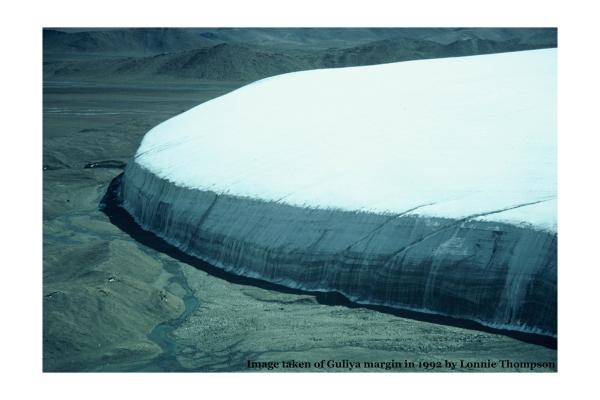A Promising Paleo-Environmental Messenger

Updated November 15, 2022
Emilie Beaudon, a principal investigator at the Byrd Center, is the first author of a recent study published in the journal Geosciences titled Aeolian Dust Preserved in the Guliya Ice Cap (Northwestern Tibet): A Promising Paleo-Environmental Messenger.
The study focused on the ice core paleodust record from the Guliya ice cap in the Kunlun Mountains, specifically Asian Aeolian dust. Mineralogical, geochemical, and Sr-Nd isotope composition of aeolian dust preserved in pre-Holocene layers of two ice cores were compared, one from the summit and the other from the plateau. The results revealed two completely different dust characteristics. The summit samples contained a mix of fine and coarse grains and included weathering-sensitive material suggestive of a dry climate at the source. The isotopic values of the layer revealed aeolian particles from the Taklimakan desert. The plateau samples contained unusual nodules of well size-sorted grey clay enriched in weathering-resistant minerals and elements typically found in geothermal waters. The results suggest these layers originated from a wet and possibly anoxic source.
The limited availability of data in the region was the impetus for Dr. Beaudon and her colleagues to embark on this research in hopes of providing a comprehensive Paleo atmospheric dust record to reduce uncertainties regarding mineral aerosols' feedback on the climate system.
By studying the dust properties, scientists learn more about the atmospheric circulation patterns and the dust cycle and can use this information to predict future changes in these patterns. In essence, aeolian dust composition can be considered an environmental messenger, warranting further investigation.
You can read more about this research in the Journal Geosciences or by visiting the Ohio State News website.
